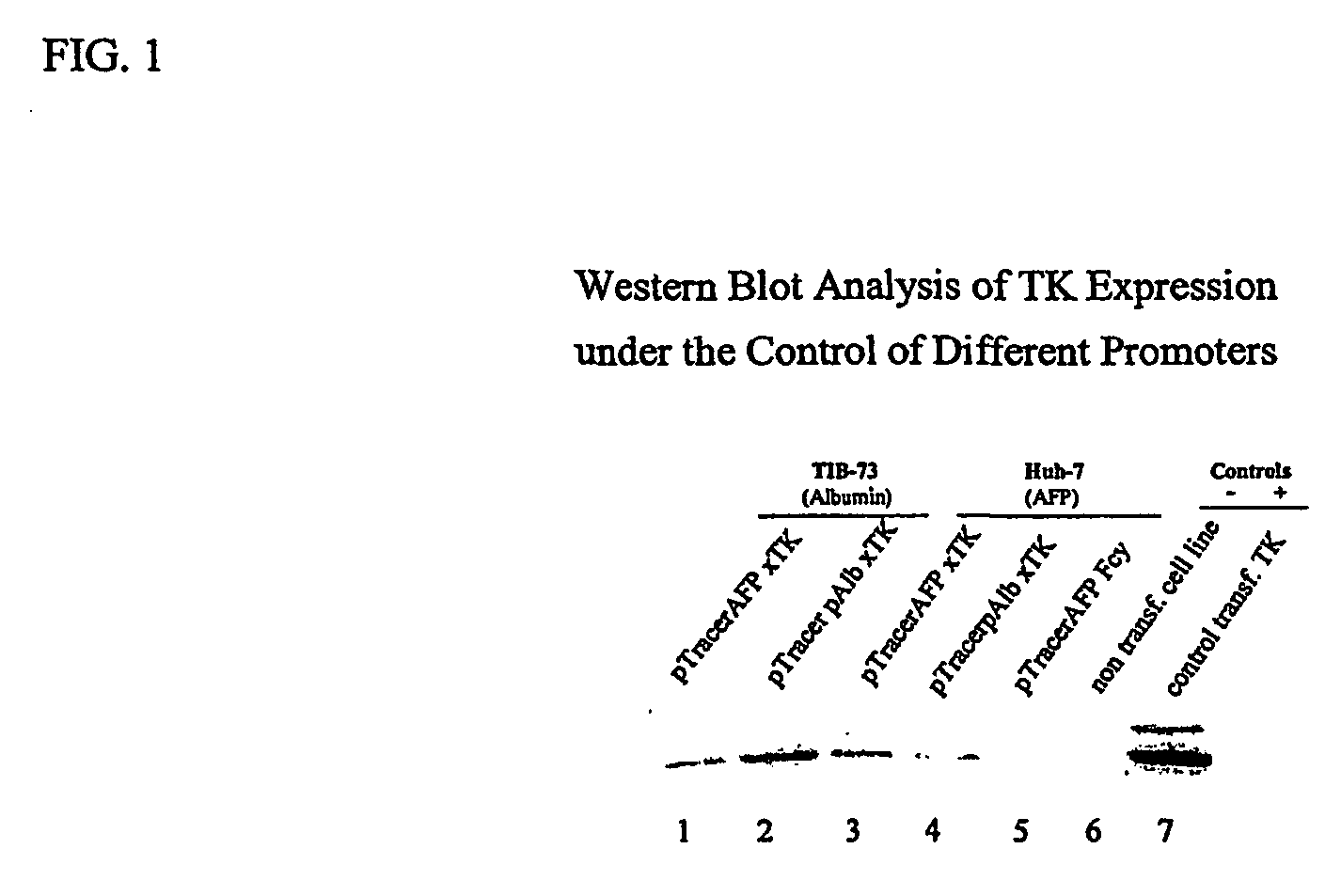Growth of foreign cells in fetal animals facilitated by conditional and selective destruction of native host cells
a technology of native host cells and foreign cells, applied in the field of chimeric mammals, can solve the problems of difficult expansion of differentiated cells, limited success in cells in vitro, and ineffective cost-effectiveness of stem cell differentiation in vitro, and achieve the effect of enhancing the growth of foreign cells
- Summary
- Abstract
- Description
- Claims
- Application Information
AI Technical Summary
Benefits of technology
Problems solved by technology
Method used
Image
Examples
example 1
[0101] Growth of Human Hepatocytes in Fetal Pigs
[0102] These studies demonstrate that human hepatocytes survive in fetal pigs and produce human liver proteins.
[0103] Pig livers can provide temporary support for patients with acute liver failure. Because many proteins produced by the liver are species specific, however, these xenografts might not be adequate for long-term support. To produce chimeric pig livers repopulated in part with human hepatocytes, fetal pigs were infused with human hepatocytes.
[0104] Human hepatocytes were injected into the livers of pre-immune fetal pigs (45 days gestation) using ultrasound guidance. Frozen and thawed human hepatocytes were infused into 8 piglets (2 or 5×106 cells) from two litters. The two piglets of another litter were infused with human hepatocytes transformed with SV40 (10×106 cells). After farrowing, a fourth litter was euthanized at 5 days and the tissues analyzed. Piglets of the first three litters were followed by testing their ser...
example 2
[0108] Growth of Human Hepatocytes from Marrow or Cord Blood Cells in Fetal Pigs
[0109] This example demonstrates that both human bone marrow and cord blood are appropriate sources for hepatocytes.
[0110] Hematopoetic stem cells demonstrate plasticity, with the ability to differentiate into somatic cells. In this study, human marrow or cord blood cells were infused into fetal pigs. The resulting chimeric pigs were assessed for evidence of human hepatocytes and serum proteins secreted by the human hepatocytes.
[0111] Human marrow cells (1.5 to 3×107 / pig) or cord blood cells (1-1.5×107 / pig) were injected into the livers of pre-immune fetal pigs (45 days gestation) using ultrasound guidance. The marrow was depleted of 75% of the CD4+ and CD8+ T cells. The pigs were delivered by Cesarean section at term. At 1 to 2 weeks of age, serum was evaluated for human serum amyloid A (hSAA) and human albumin (hAlb) using an ELISA. Paraffin-embedded sections of liver were stained by immunoperoxidas...
example 3
[0113] Expression of a Suicide Gene Product in a Cell Line and Sensitivity to a Prodrug
[0114] This example shows that selective expression of a suicide gene product and selective killing of target cells can be controlled by a tissue-specific promoter.
[0115] Liver cell lines were transfected with suicide genes controlled by either an albumin or an α-fetoprotein promoter. Albumin and α-fetoprotein are expressed primarily in hepatocytes, with α-fetoprotein expressed more in immature hepatocytes and liver carcinoma lines.
[0116] Mouse and human liver cell lines were transfected with constructs containing delta thymidine kinase under the control of either a porcine albumin or α-fetoprotein (AFP) promoter. The mouse cell line (TIB73) is a line of mature hepatocytes in which albumin is expressed. The human cell line (Huh-7) is a line of hepatocellular carcinoma cells that express predominantly AFP. The transfected cells were tested for thymidine kinase by Western blot.
[0117] To assess t...
PUM
| Property | Measurement | Unit |
|---|---|---|
| time | aaaaa | aaaaa |
| time | aaaaa | aaaaa |
| time | aaaaa | aaaaa |
Abstract
Description
Claims
Application Information
 Login to View More
Login to View More - R&D Engineer
- R&D Manager
- IP Professional
- Industry Leading Data Capabilities
- Powerful AI technology
- Patent DNA Extraction
Browse by: Latest US Patents, China's latest patents, Technical Efficacy Thesaurus, Application Domain, Technology Topic, Popular Technical Reports.
© 2024 PatSnap. All rights reserved.Legal|Privacy policy|Modern Slavery Act Transparency Statement|Sitemap|About US| Contact US: help@patsnap.com









